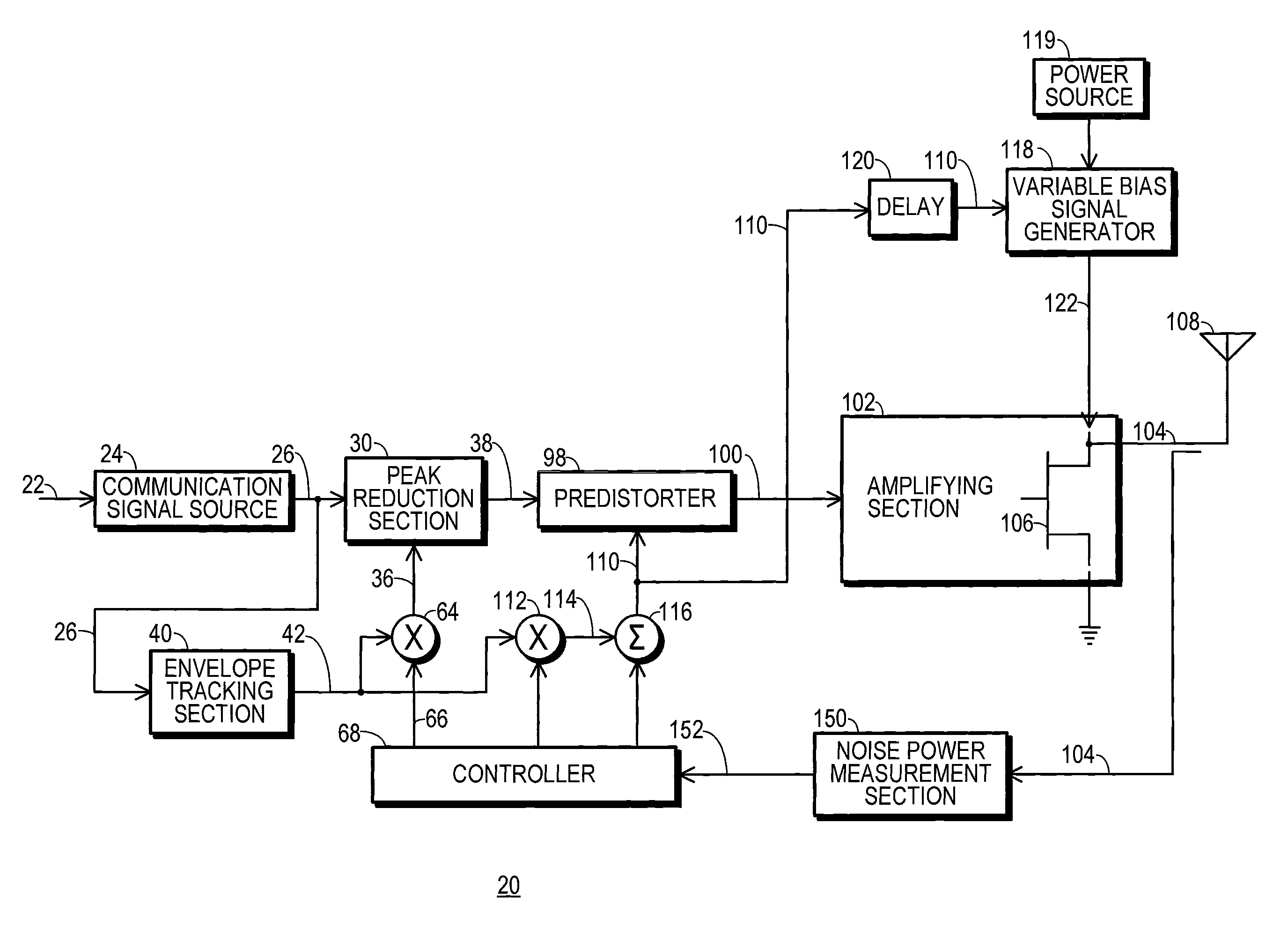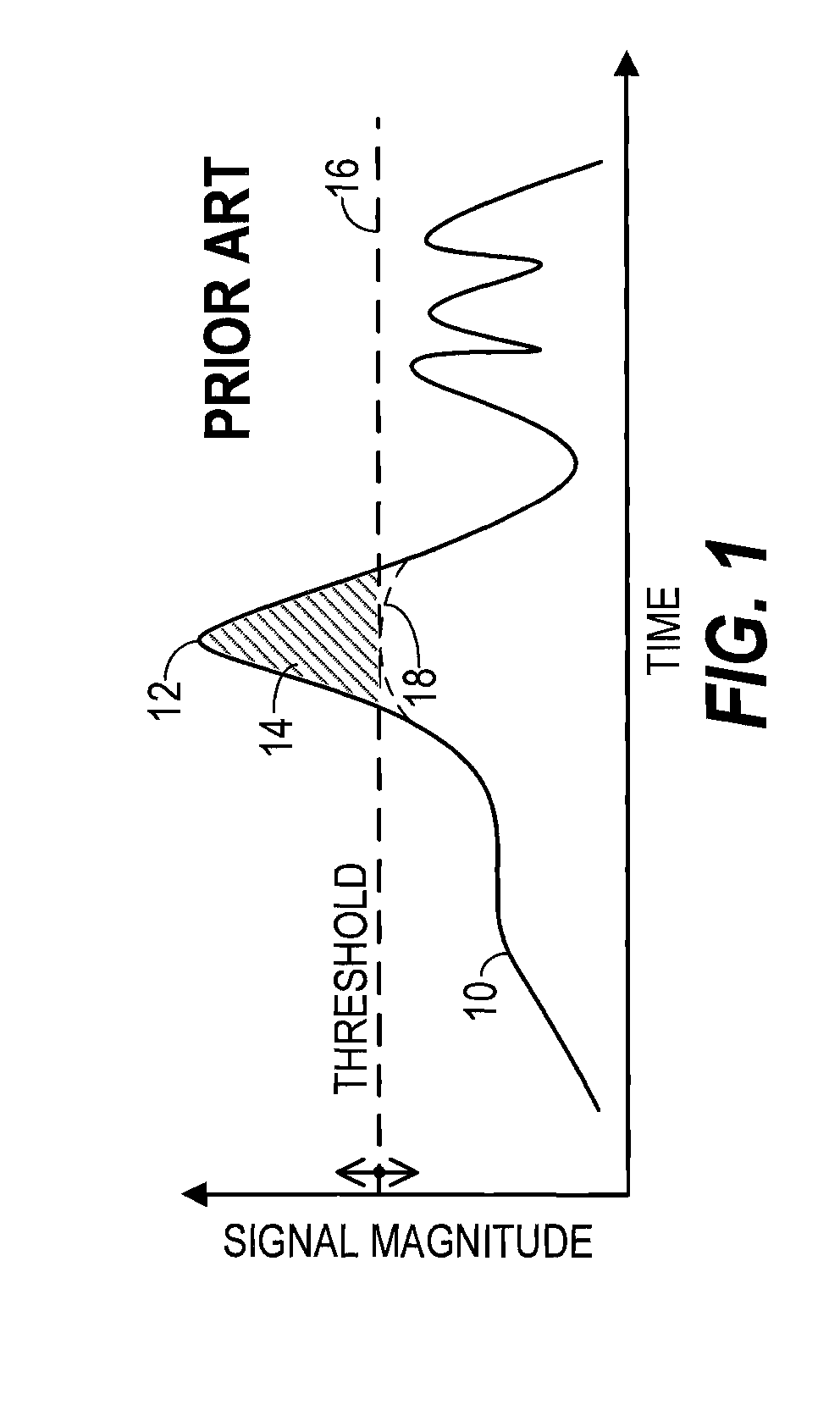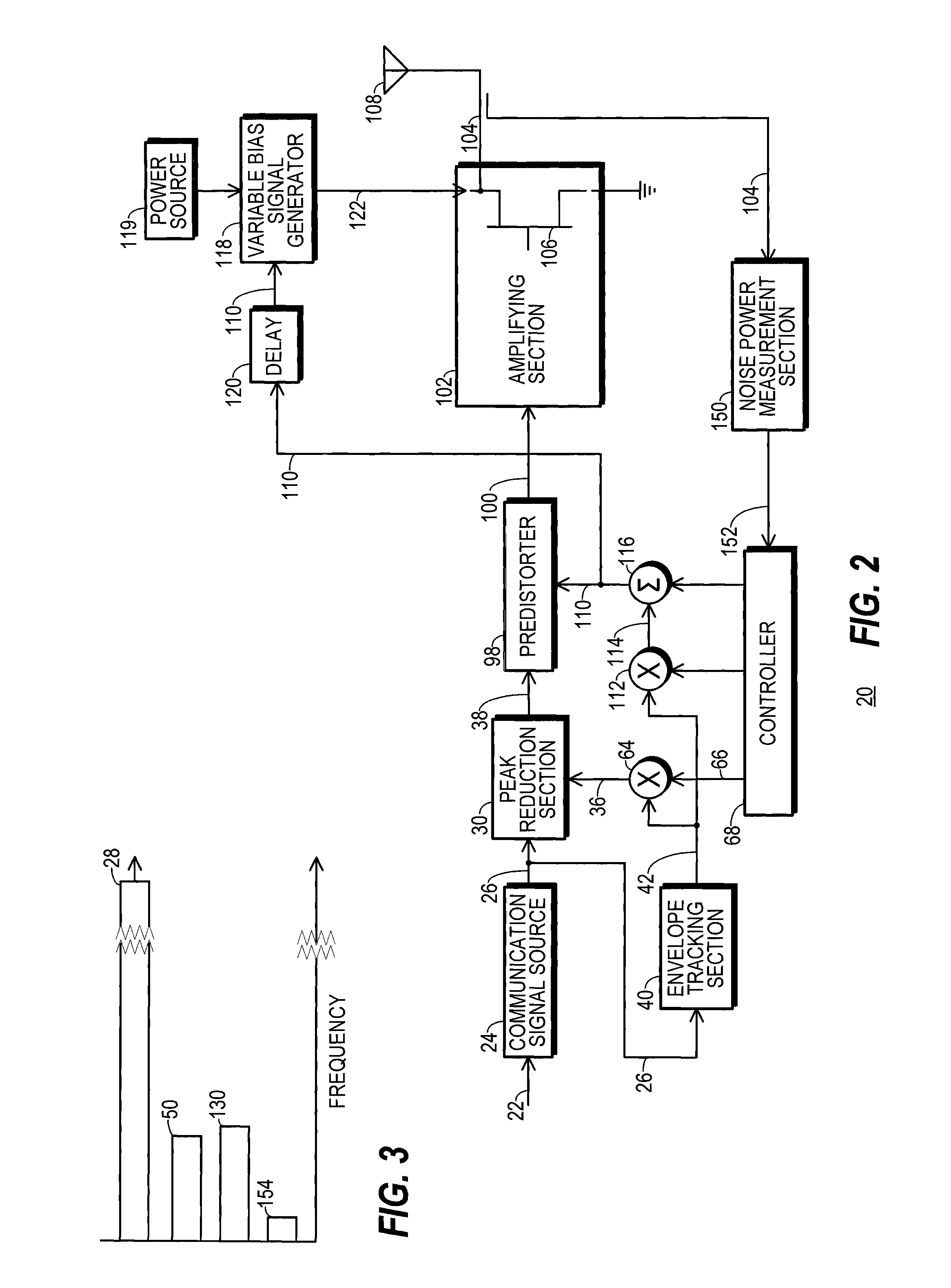Transmitter with peak-tracking PAPR reduction and method therefor
a technology of papr reduction and transmitter, which is applied in the field of radiofrequency (rf) communication systems, can solve the problems of nonlinearity, nonlinearity, nonlinearity, and spectral regrowth, and all linear rf power amplifiers invariably fail to meet,
- Summary
- Abstract
- Description
- Claims
- Application Information
AI Technical Summary
Benefits of technology
Problems solved by technology
Method used
Image
Examples
Embodiment Construction
[0033]FIG. 2 shows a simplified block diagram of a transmitter 20 configured in accordance with one embodiment of the present invention. In the embodiment explicitly depicted in the figures, transmitter 20 is configured to wirelessly transmit an RF communication signal. But those skilled in the art will appreciate that the present invention may also be used in other types of communication systems, including a communication system that transmits optical signals through an optical transmission medium, a system that transmits signals to a magnetic recording medium, and in other applications, such as audio amplification.
[0034]Transmitter 20 receives one or more raw data streams 22 at an input to a communication signal source 24. Communication signal source 24 provides a digitally modulated, complex, baseband version of an inflated-peak communication signal 26. A communication signal, such as inflated-peak communication signal 26 and others discussed below, is an electronic signal that m...
PUM
 Login to View More
Login to View More Abstract
Description
Claims
Application Information
 Login to View More
Login to View More - R&D
- Intellectual Property
- Life Sciences
- Materials
- Tech Scout
- Unparalleled Data Quality
- Higher Quality Content
- 60% Fewer Hallucinations
Browse by: Latest US Patents, China's latest patents, Technical Efficacy Thesaurus, Application Domain, Technology Topic, Popular Technical Reports.
© 2025 PatSnap. All rights reserved.Legal|Privacy policy|Modern Slavery Act Transparency Statement|Sitemap|About US| Contact US: help@patsnap.com



